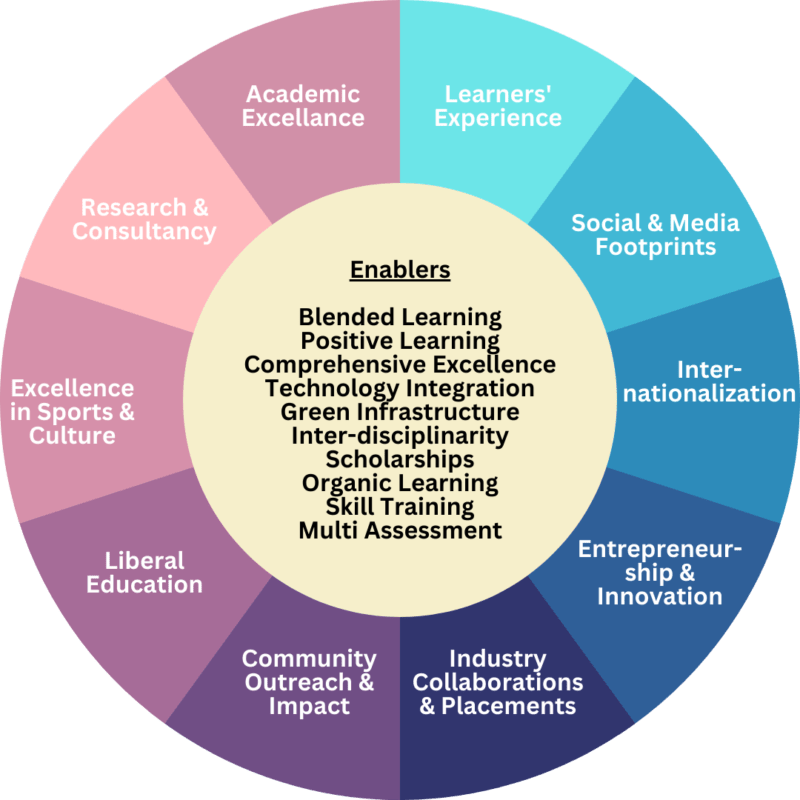The Blended Learning: All You Need To Know About New Age Education
Part I
10Square:
Evolving a Model for Post-Pandemic University Education:
Education in general, and higher education in particular (graduation, post-graduation, research), have gone through an unforeseen disruption during the COVID pandemic world-over. Just in India, UNESCO had estimated in November 2020 that as many as 52% of the 283 million formal learners across all levels of education did not have one bit of any education since the onset of the pandemic, and the remaining 48% had varying degrees of the same. The situation surely is far better today, but there are several long-term impacts that the pandemic has brought in to higher education. The story in Bangladesh shall not be any different.

Evolving a Model for Post-Pandemic University Education:
Education in general, and higher education in particular (graduation, post-graduation, research), have gone through an unforeseen disruption during the COVID pandemic world-over. Just in India, UNESCO had estimated in November 2020 that as many as 52% of the 283 million formal learners across all levels of education did not have one bit of any education since the onset of the pandemic, and the remaining 48% had varying degrees of the same. The situation surely is far better today, but there are several long-term impacts that the pandemic has brought in to higher education. The story in Bangladesh shall not be any different.
While most of what are noted here were already there before the pandemic, and were in discussion, circulation and also in practice at times and in some places since the onset of this century, their essentiality has grown by leaps and bounds today. We look at ten enablers of higher education, and how they lead to ten areas of outcomes, and these all can and should be quantifiable and measurable as well. The common belief is that which cannot be measured, cannot often be seen, and cannot be claimed to make a great practice.
ENABLERS:
Blended Learning:
Education managed through a learning management system (customized and proprietary one like Amizone of Amity or BLC of Daffodil or a subscribed LMS like Canvas or Blackboard) is a must today. In the true blue approach of flipped classroom, all proprietary learning resources (those made by the mentors themselves including their own videos, podcasts, online courses, case-studies and presentations) and aggregated learning resources (taken from open digital sources, MOOCs, pdfs etc) need to be uploaded on the LMS by the mentors well ahead of the actual session (digital or physical). This is done for advance learning asynchronously at each learner’s own pace, place and time. Then, when the learners meet synchronously in a physical or digital class, there can be quiz, polemics, doubt clearing, newer cases, et al. Further, the post-session learning can move to the laboratory, studio, and online to take it forward through practical and value-added learning. In effect, from pre-session, during-session to post-session, the digital and the physical, the synchronous and the asynchronous, the conceptual and the practical: all stages and phases of learning are becoming seamlessly blended.
Positive Leadership:
Practicing Positive Leadership and Positive Leadership: Strategies for Extraordinary Performance, both by Kim S. Cameron, outline positive leadership norms and practices. Modern higher education must ensure quality and qualified manpower through a positive leadership which can be institutionalized with the following steps, among others.
Key Result Areas (KRAs) of each functionary in the system must be well-defined at every level, and no senior must digress the line of reporting. Appraisal of any mentor or support staff must be done based on a well-documented transparent set of matrices, and from four angles: senior, self, peers and junior (including the learners).
A senior must appreciate a colleague in public, and may reprimand, if needed, only in person. There should be an Appreciation Board in each department & functional area; Best Employee of the Month, Outstanding Mentor of the Month, Star Learner of the Month in each department, along with celebration of birthdays of staff members collectively (a card, a chocolate box & a book from the top management).
The leader must lead by example (e.g., before asking someone to prepare an online course, let the senior do that). Promote self-determination in your juniors by showing them how it’s done. Explain the rationale, rather than asking to implement by diktat. Speaking less, leadership must practice active listening. Ensure psychological safety: no fear of being put down for speaking up or sharing ideas. Make learning & productively expressing the usual norm through online courses, workshops, writing (journal, mainstream, social media), debates, public talks, and panel discussions within and beyond the campus.
Positive leadership can evolve when we have a clear-cut communication method and line of authority. People often leave their managers, not the organizations they work for. “People don’t buy what you do; they buy why you do it. And what you do simply proves what you believe.” Create a Purpose for the organization (salary & designation, though important, cannot be the only purposes).
Path, in positive leadership, focuses on having clarity on goals, resources, roles, timelines, and strategies. Path defines the ‘how’ in granular detail. Progress through appreciation, celebration of success, and providing feedback & support to team leading to success are positive elements of progress. Self-awareness comes through leadership asking for feedback on major issues.
Positive leadership calls for relational transparency (having a clear leadership philosophy; purpose bigger than the individual or the Chair: living by its spirit). Also, there has to be a balanced processing (using active listening in meetings or when team members come to put forth an issue, responding to the ground reality, connecting it to the Mission & Vision).
Ethical behaviour (following through on what you say you will do) and Trustworthiness (treating others with respect and keeping your word) are also hallmarks of positive leadership, apart from supportiveness (giving appreciation and support to followers) and empowerment (giving your followers freedom and choice).
Set high expectations, and live up to them: Big Goals for the organization and for each team-member, and for self (by each leader). Make sure you deliver on the commitments you make, or explain why there is partial failure. Try to resolve the inevitable conflicts that will arise in the workplace quickly and effectively. Firmly discourage small talk, personality-focused talk. Ordinary persons talk about people, good persons talk about events, and great persons focus on ideas.
Positive leadership may lead to be a Great Place to Work, formally. This will help the institute to get a snapshot of Trust levels between employees and the organization, to compare the given workplace culture with competitors and the best in the trade, to show commitment to employees about improving workplace culture, to get insights on how your employees perceive your people practices. These will help to project your employer brand internally and externally, attract and retain talent, and is surely an opportunity to earn national & global recognition.
Comprehensive Excellence
We often misjudge our learners by judging their academic brilliance through written examinations, once mid-term and once at the end of the course, and looking at their knowledge quotient largely. Excellence can only be evolved if we look at a learner comprehensively: knowledge component through written assessment, comprehension through applications, leadership through initiatives, teamwork through other activities, compassion through community outreach, digital abilities, use of libraries and learning resources, physical abilities through games and sports, aesthetics through cultural activities, creativity and problem-solving through suitable tasks given, emotional quotient and collaborative acumen through group tasks and peer-learning, and a genuine interest in one niche area through organic learning along with project-based education. Each of these components must have some contribution to the final assessment and score to illustrate the level of learning and excellence of a learner, and not just marks of written examination. The comprehensive credits, scores and grades given based on evidences in hand can only lead to the path of comprehensive excellence of a learner. The comprehensive score and grade should be the cardinal one for life, for employment reference and for transcription.
Final Grade & Score of a Learner to be determined comprehensively considering the follows:
- Academics (Midterm & Final Exams, Quiz, Assignments): 50%
- Social Work outside Campus: 5%
- Leadership, Teamwork, Art of Living (including Clubs): 10%
- Library & Research: 10%
- Project-based Organic Learning: 10%
- Sports & Healthcare: 5%
- Employability 360, Presentations & Digital Skills: 10%
Since there shall be UGC norms that need to be followed, we can have two scores, one academic (100%) as done now, and another comprehensive (100%) by doubling the scores of sections B to G.
Technology Integration:
Today, post-pandemic, technology integration is absolutely essential in higher education. This is useful to have an online dossier of all outcomes of a learner, preserving all learning resources of every mentor, and have blended learning not just for theory or concepts, but taken forward even in the practical area with virtual studios and laboratories. The resources and outcomes may be on the cloud as well.
Technology integration also refers to introducing all fourth industrial revolution emerging technologies (4IRTech) in any and every domain of learning, technologies like Artificial Intelligence-Machine Learning, internet of things, cyber security, block-chain, additive technologies, virtual, augmented and mixed reality, big data, Metaverse, internet of things, et al. The use of these may vary from engineering to literature, but the fundamentals of these and their usage must be known to any higher education learner.
Technology integration also means having a Smart Campus, that which ensures smart learning, smart governance, smart healthcare, smart green life, smart networking, and smart campus management. This is not only about having digital network and its bandwidth, but also having artificial intelligence and machine learning integrated with the available digital systems to predict impending scenarios, possible cases of crises, if at all, and their responses.
Part I ends….




